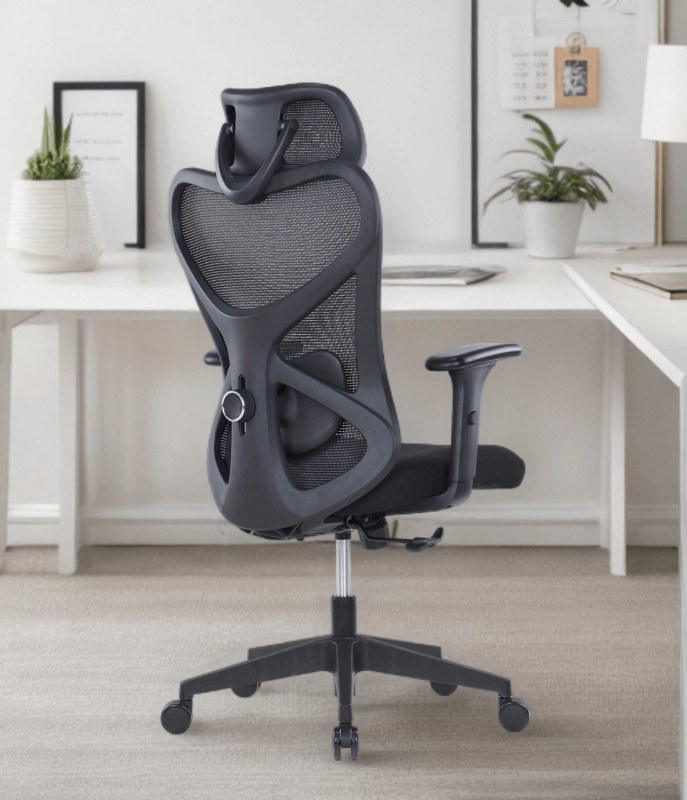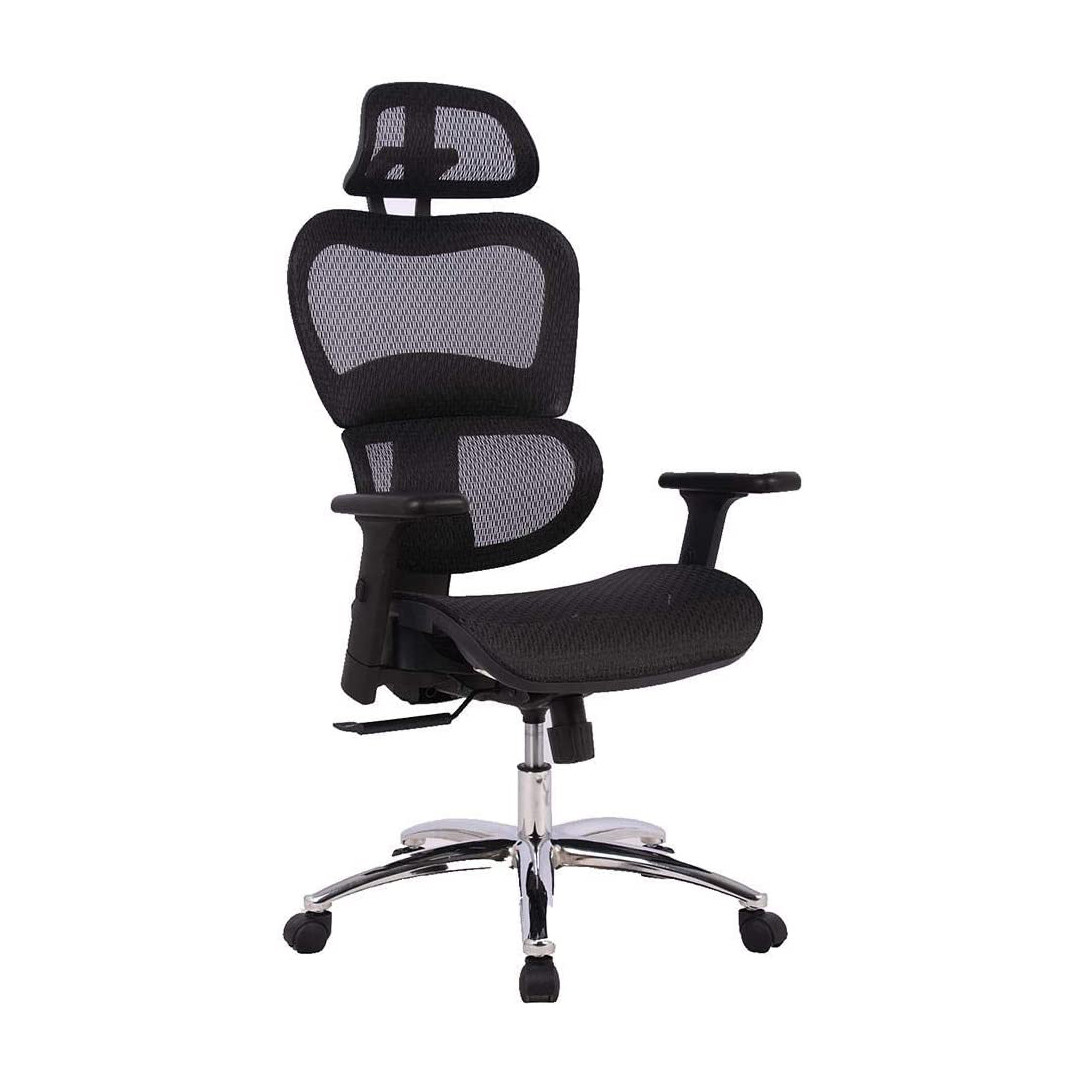
Best Office Chairs for Standing Desk Setups
Introduction
Standing desks are revolutionizing modern workspaces, encouraging movement, better posture, and enhanced energy levels. But to get the most out of a standing desk, the right chair is essential. It’s not just about sitting less—it’s about sitting smarter. An ideal office chair for standing desk setups supports quick transitions, encourages active sitting, and complements your body’s movement throughout the day. In this guide, we’ll explore how to choose the perfect chair to pair with your standing desk and why the right fit makes a difference in productivity and comfort.
1. Importance of Height Adjustability
A chair for a standing desk setup must have a broad height adjustment range. This ensures it can reach elevated desk surfaces and accommodate different postures—from traditional sitting to perched or leaning positions during transitions.
2. Active Sitting Encouragement
Standing desks promote movement, so your chair should do the same. Chairs designed with dynamic tilt or slight bounce encourage subtle shifts in posture that improve circulation and reduce stiffness throughout the day.
3. Lumbar Support for Variable Postures
When alternating between standing and sitting, lumbar support becomes even more vital. It should stay effective regardless of your seated angle, offering back support whether you’re fully upright or partially reclined.
4. Breathable Materials for All-Day Use
Alternating between sitting and standing increases overall movement and body temperature. Chairs made with breathable mesh or ventilated designs help you stay cool and focused during long work sessions.
5. Lightweight and Mobile Design
Transitioning between sitting and standing should be seamless. A chair that’s easy to move and adjust on the fly—without being bulky—helps maintain a smooth workflow and encourages frequent posture changes.
6. Stability at Higher Heights
When your seat is raised to match a standing desk, it must remain stable. Choose chairs with wide, sturdy bases and strong frame construction to ensure balance even at maximum height settings.
7. Seat Cushioning That Supports Perching
Chairs for standing desk setups often serve during quick rests rather than long sits. The seat should be firm yet contoured for perching postures, helping to reduce fatigue without encouraging slouching.
8. Foot Ring or Leg Support Options
Higher seating positions benefit from a foot ring or footrest, preventing your legs from dangling. This feature supports circulation and ensures ergonomic comfort while using the desk in a taller setup.
9. Compatibility with Desk Movement
If your standing desk is electric or height-adjustable, the chair should seamlessly integrate into your routine. Swivel features and smooth casters help you stay mobile and aligned with your workstation as it shifts.
10. Visual Harmony with Modern Workspaces
Standing desk setups often reflect a modern, minimalist aesthetic. A sleek, ergonomic chair with clean lines and neutral colors complements the look while still offering full functional support.
Additional Considerations for Sit-Stand Workflows
Fast and Smooth Adjustments
Quick height adjustment features—like a responsive gas lift—make it easy to switch between sitting and standing without interrupting your flow.
Narrow Footprint for Compact Workspaces
If your standing desk is in a smaller office or home setup, choose a chair with a compact design that doesn’t overwhelm the space.
Hybrid Use Across Work Modes
A quality chair should support deep focus during seated work and brief rest during standing sessions. Look for one with multi-angle tilt and recline flexibility.
Noise-Free Movement
In quiet offices or shared spaces, silent casters and tilt mechanisms prevent distractions when adjusting or moving the chair.
Durability with Height
Higher seat positions demand stronger pneumatic lifts and base construction. Invest in chairs that retain stability and lift performance over time.
Armrests That Don't Interfere
Choose armrests that are adjustable or removable to ensure they don’t interfere with raised desks or restrict motion during sit-stand transitions.
Designed for Perch Postures
Some ergonomic chairs are designed specifically for semi-standing or perch positions. These chairs reduce hip pressure and promote upright posture.
Easy-to-Clean Surfaces
Standing desk users may snack or move more frequently—opt for materials that are simple to maintain and resist wear.
Enhanced Core Engagement
Some ergonomic chairs promote balance and core engagement by introducing slight instability, helping you build posture strength throughout the day.
Warranties That Support Everyday Use
Look for long-term support and warranties that match the frequency and versatility of use demanded by standing desk environments.
Recommended Products:
-
Ucomfort Super Ergonomic Executive Office Chair (High Back - Black)
Designed with advanced ergonomic features and adjustable height suitable for standing desk pairings. Offers superb lumbar support, smooth mobility, and breathable materials. -
Ubreath Super Ergonomic Executive Office Chair
Ideal for active workspaces, this chair offers intuitive lumbar support, flexible reclining, and superior comfort for transitioning between standing and seated positions.
Final Thoughts
Standing desks change how we work—but the right chair ensures we stay supported, focused, and comfortable through every posture shift. Whether you're perched for a short break or seated for focused typing, a high-quality ergonomic chair complements your standing desk and empowers you to move through your day with ease. Don’t just think about standing more—sit better too.




